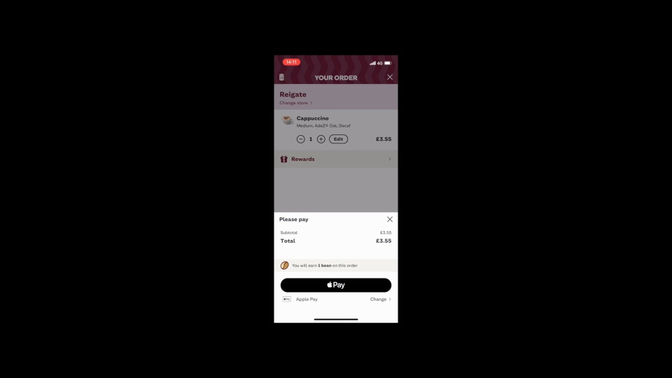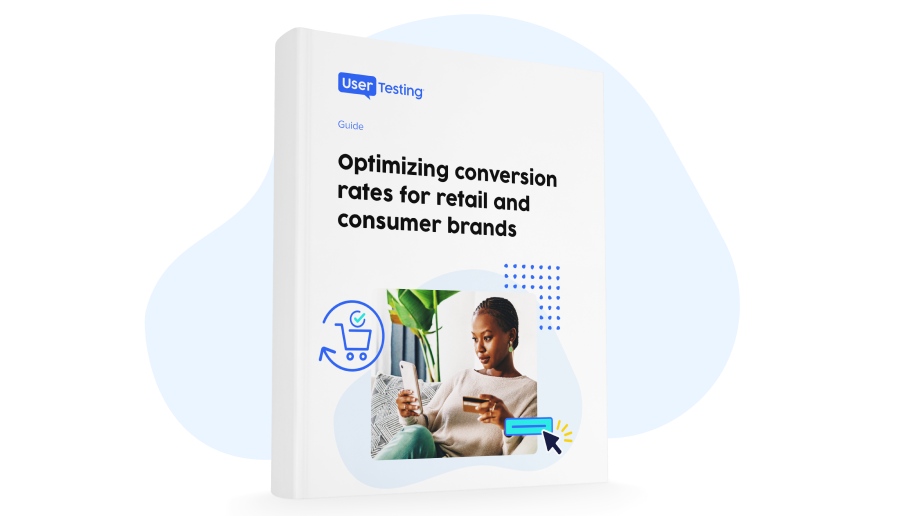
Why you need usability testing for your ecommerce business

The ecommerce industry has had a rocky few years, from navigating tumultuous market conditions and increasing reliance on digitization to almost endless customer choice. As the increasing cost of living continues to change consumer habits and preferences, it’s all the more critical for ecommerce organizations to get inside the heads of their users, or at least use the next best thing—usability testing.
Ecommerce stores evidently don’t have the same level of human interaction as brick-and-mortar stores, which can create more potential for friction points and a heavier reliance on a solid UX design. Retailers can’t rely on guesswork and assumptions to solve their customers’ pain points, especially when $18 billion is lost annually thanks to cart abandonment, according to Forrester. To ensure you meet customers’ expectations and increase conversions, leverage usability testing to design ecommerce experiences that’ll satisfy your customer and help you stand out among a sea of competitors.
Below, we'll walk through what usability testing is and why it’s critical for your ecommerce business.
What is usability testing?
Usability testing is a form of user research where test participants use your product to complete tasks. It examines your product's functionality and validates the intuitiveness of your user interface and design. Your product must operate on a high level of functionality because if users cannot complete tasks without difficulty or frustration, they may switch gears and work with a competitor. Learning how to conduct usability testing will help you identify these areas of confusion and pinpoint exactly where your product has room for improvement.
Ideally, conduct usability testing early and often, from the prototyping stage down to post-launch. Whether you’re updating your ecommerce site for the fifth time or launching your product pages for the first time, usability testing is a continuous process and an unskippable step.
Related reading: 20 tools every user experience pro should know about
What can usability testing improve in the ecommerce experience?
An ideal ecommerce experience needs a lot of puzzle pieces to align to meet and exceed customer expectations. While you can’t tackle every friction point at once, listening to user feedback can help guide your priorities. Below is a glimpse of some of the possibilities.
Customer journey mapping: Observe customers from initial brand awareness to final decision to understand the customer journey and get closer to making potential customers lifelong advocates.
Device optimization: Get feedback based on tech criteria to ensure users across different devices have the same positive experience—or if they’re experiencing inconsistencies that are detrimental to your brand credibility.
Site design validation and discovery: Understand how much information is enough to effectively compel audiences and optimize site design and layout. You may be surprised that users preferred an older landing page over the new one.
Presales: Present concepts and ideas to potential customers to get feedback and fix challenges before you go live. This step validates early ideas and unveils any misalignment between your team’s thoughts and your customers’ expectations.
Competitive intelligence: Understand your competitors’ kryptonite (or competitive advantage) to make improvements that help you surge ahead in the market.
Ad creative validation (messaging and sentiment): Ensure your ads resonate with your target audiences before you launch so you get the expected responses. Consider showing your users multiple options to settle any internal debates.
Site content validation and discovery: Better understand the ideas and topics your customers seek to inform content strategy.
Form and shopping cart optimization: Observe customers from initial brand
awareness to the final decision to understand the customer journey and determine how to mitigate any high cart abandonment rates.
Real-world testing: View customer experiences at home or in-store for the most direct view of how they make decisions. You can ask users to film their purchase or return experiences and discuss their thought process as you watch along.
What is cart abandonment, and why is it a problem?
All ecommerce organizations tend to share one thing in common—cart abandonment, which is just one of the pain points that’ll plague an ecommerce organization if you don’t collect user feedback during your development process.
This issue occurs when a potential customer places items in the shopping cart of an ecommerce site and doesn't go to checkout and complete the purchase. For example, a customer may have planned to buy an item, but an unclear return policy prevented them from converting. Or, they found too many hidden fees late in the checkout process, making them head to a competitor.
Retailers should closely monitor their cart abandonment rate as it may indicate an undiscovered issue with your site's user experience or a broken sales funnel, among plenty other factors. If users aren't leaving your site satisfied, it'll lead to a significant loss in revenue and conversions.
A study by Baymard Institute found that 69% of online shopping carts are abandoned. And it’s estimated that the value of abandoned shopping carts worldwide is $4.6 trillion. Although this number is high, retailers have plenty of opportunities to turn this around and reduce cart abandonment rates.
By leveraging usability testing, you’ll get ahead of issues before they snowball and discover pain points your customers may not have known they had.
Optimizing your ecommerce experience post-cart abandonment
Although it may appear as if all is fraught after a potential customer abandons their cart, there's still a window of opportunity for recovery. Beyond optimizing the checkout process for success, prioritize reeling in the customer even after they leave your site. However, before implementing the following, first enlist your customers' feedback.
By leveraging moderated or unmoderated testing with the UserTesting platform, you’ll find out if follow-up emails are a welcome nudge or a nuisance, or if ad retargeting is a little too personal.
Here are some ways to conduct cart recovery.
1. Follow-up emails
If a user happens to enter their email before leaving checkout, send a personable and friendly email reminding them of their cart—preferably within one business day. Try offering a promo code or a custom offer to entice them to return and finish the transaction. Your follow-up email may even include product recommendations of similar items, as customers may have left the cart because they couldn't find what they were looking for.
And even if the customer still doesn't intend to purchase, they may be interested in signing up for your newsletter to learn about future promotions, new product offerings, and more.
2. Ad retargeting
Ad retargeting presents advertisements to your customer of the products they abandoned. It ensures that your product remains relevant in customers' minds and reminds them about what they left behind.
3. Push notifications
Many websites or apps ask customers if they’d like to receive push notifications to stay top of mind and further connected. If customers consent, send them friendly reminders about their abandoned cart. You may even tailor your messaging to the customer by reminding them what's in their cart, and consider offering incentives like a promo code.
4. Abandonment surveys
Collecting qualitative data helps to better understand what element of your checkout process is deterring conversions. Before website visitors leave your site without converting, consider launching a survey asking "What stopped you from purchasing?"
Customers can provide the following answers to narrow down the why behind cart abandonment, while offering your organization helpful insights in improving the checkout funnel.
- I was browsing
- Another retailer had the same item for a cheaper price
- I couldn't find what I was looking for
- I changed my mind
- The checkout process was too long or too confusing
What top ecommerce organizations have said about usability testing
UserTesting has worked with a long list of ecommerce customers who’ve relied on the human insight platform to democratize research, boost website usability, and solve both internal and external issues. Here are what their teams had to say about the power of UserTesting and user feedback.
Athletic Greens

Scotts Miracle-Gro

Costa Coffee

Optimizing your ecommerce experience with customer feedback
Use usability testing as your north star to continuously improve and innovate your ecommerce experience. Only human insight can uncover valuable information about how people interact with your website and what pain points they face during checkout. With these insights, you can make the necessary improvements to perfect the customer experience and improve your UX. Remember, you’re not your customer.
You may think your newest design will generate more sales and offer more convenience to customers when it could be doing just the opposite. By leading with a customer-centric mindset, you’re on the fast track to exceeding your consumers’ expectations—so you can weather today’s storms and tomorrow’s.

Optimize conversion rates
Accelerate growth and streamline operations by crafting frictionless ecommerce experiences that exceed customer expectations.





